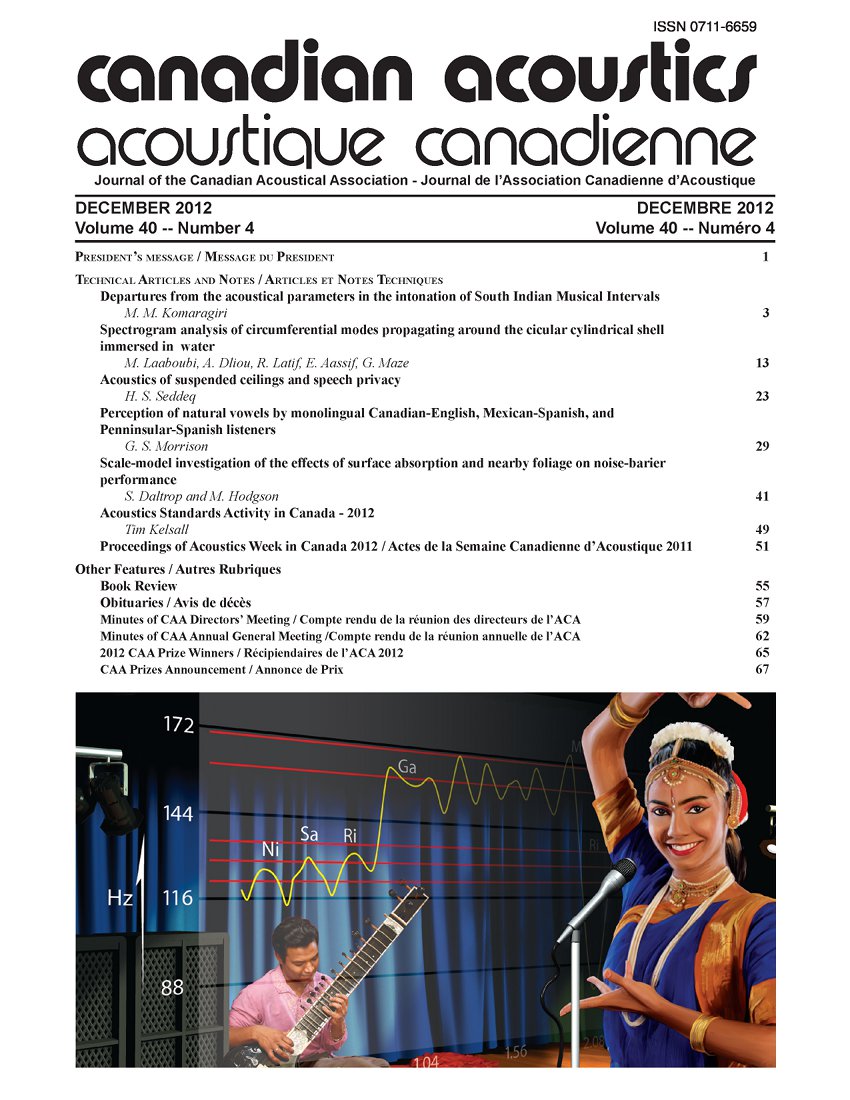Perception of natural vowels by monolingual Canadian-English, Mexican-Spanish, and Penninsular-Spanish listeners
Abstract
On the basis of a previously-reported synthetic-vowel perception experiment, it was hypothesized that the location of the perceptual boundary between Spanish /i/ and /e/ differed for monolingual Peninsular-Spanish and Mexican-Spanish listeners (north-central Spain and Mexico City), and that this would affect the perception of the Canadian-English /i/-/i/ contrast (western Canada): Peninsular-Spanish listeners were predicted to identify almost all tokens of Canadian-English /i/ as Spanish /i/ and almost all tokens of Canadian-English /i/ as Spanish /e/ (two-category assimilation); whereas Mexican-Spanish listeners were predicted to identify almost all tokens of Canadian-English /i/ as Spanish /i/, but identify some tokens of Canadian-English /i/ as Spanish /i/ and some as Spanish /e/. Monolingual Peninsular-Spanish and Mexi-can-Spanish listeners’ perception of natural tokens of English /i/, /i/, /e/, and /e/ produced by monolingual Canadian-English speakers was tested. Both the Peninsular-Spanish and the Mexican-Spanish listeners had results consistent with the perceptual pattern predicted for the Peninsular-Spanish listeners. The results call into question the assumption that first-language-Spanish learners of English have difficulty learning the English /i/-/i/ contrast because they initially assimilate most tokens of both English vowel categories to a single Spanish vowel category, Spanish /i/.Additional Files
Published
How to Cite
Issue
Section
License
Author Licensing Addendum
This Licensing Addendum ("Addendum") is entered into between the undersigned Author(s) and Canadian Acoustics journal published by the Canadian Acoustical Association (hereinafter referred to as the "Publisher"). The Author(s) and the Publisher agree as follows:
-
Retained Rights: The Author(s) retain(s) the following rights:
- The right to reproduce, distribute, and publicly display the Work on the Author's personal website or the website of the Author's institution.
- The right to use the Work in the Author's teaching activities and presentations.
- The right to include the Work in a compilation for the Author's personal use, not for sale.
-
Grant of License: The Author(s) grant(s) to the Publisher a worldwide exclusive license to publish, reproduce, distribute, and display the Work in Canadian Acoustics and any other formats and media deemed appropriate by the Publisher.
-
Attribution: The Publisher agrees to include proper attribution to the Author(s) in all publications and reproductions of the Work.
-
No Conflict: This Addendum is intended to be in harmony with, and not in conflict with, the terms and conditions of the original agreement entered into between the Author(s) and the Publisher.
-
Copyright Clause: Copyright on articles is held by the Author(s). The corresponding Author has the right to grant on behalf of all Authors and does grant on behalf of all Authors, a worldwide exclusive license to the Publisher and its licensees in perpetuity, in all forms, formats, and media (whether known now or created in the future), including but not limited to the rights to publish, reproduce, distribute, display, store, translate, create adaptations, reprints, include within collections, and create summaries, extracts, and/or abstracts of the Contribution.


